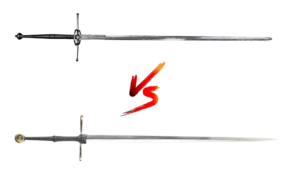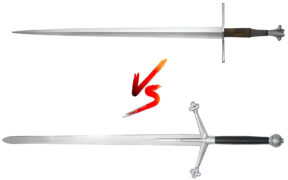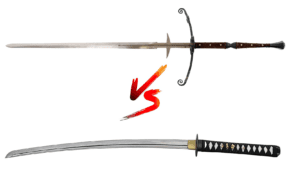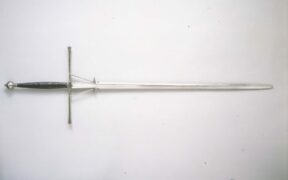Zweihander vs Claymore: Duel of the Two-Handed Swords
NO AI USED This Article has been written and edited by our team with no help of the AI
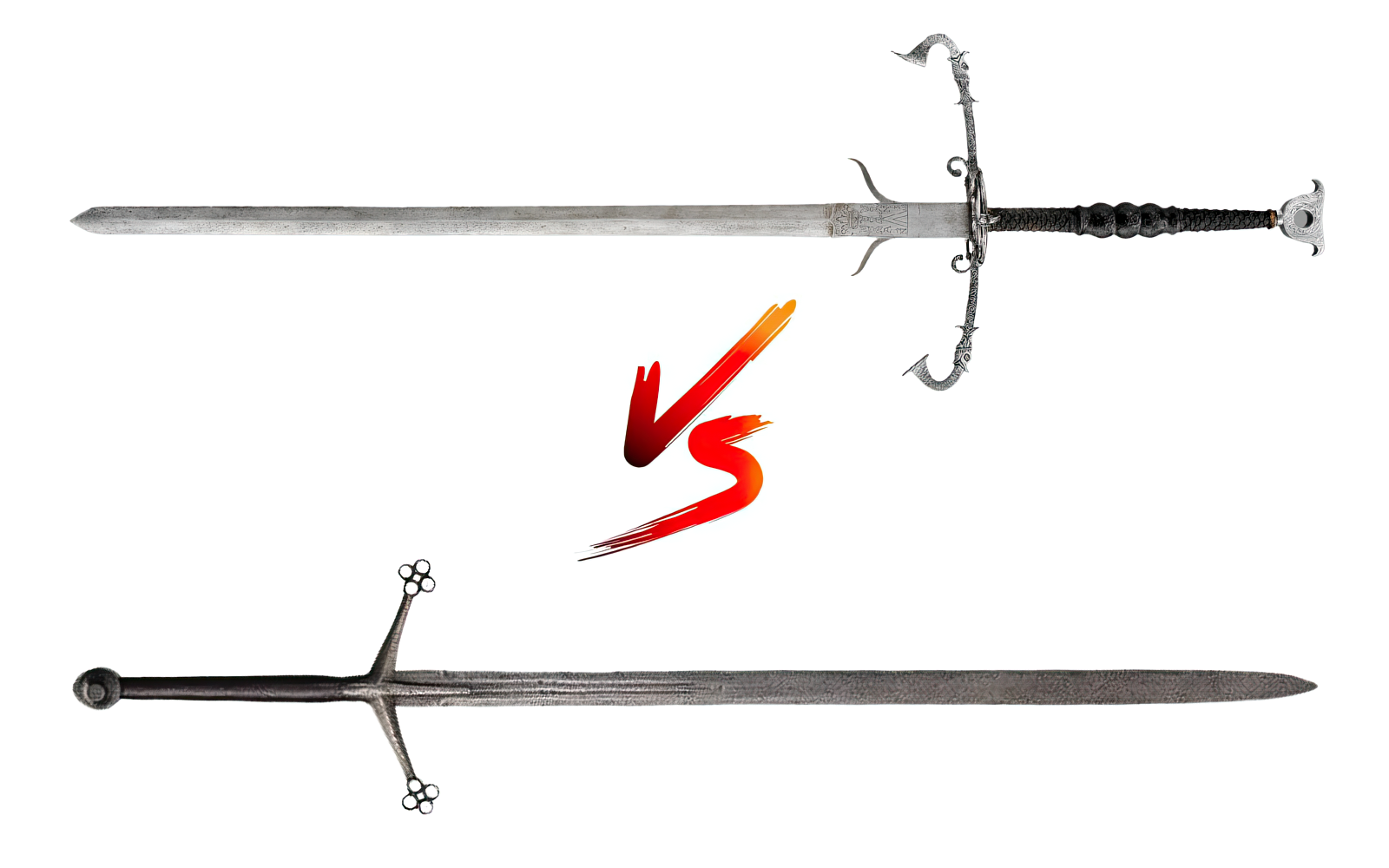
The Zweihander and Claymore are two of the better known two-handed swords throughout history. Despite being a weapon that often fascinates many visitors in museums, these swords have had less attention compared to other blades.
This article delves into two-handed swords and what sets the Zweihander and claymore apart.
Defining Two-Handed Swords
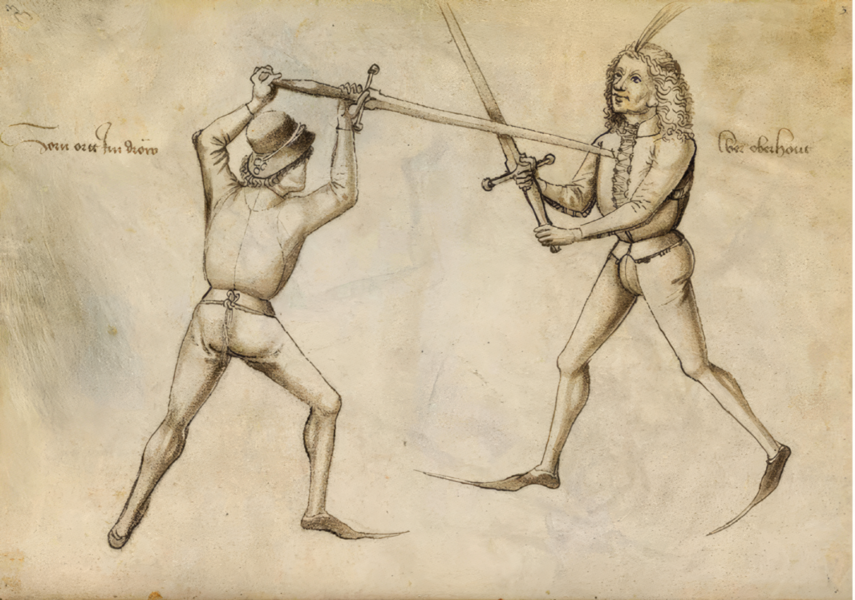
There are many swords out there that have hilts that can accommodate both hands. However, true two-handed swords should also fulfill the following requirements:
- Require two hands to be wielded effectively.
- Hilt must accommodate both hands with enough space between for a fulcrum effect – better control, precision, and speed
- Weigh between 4 to 8 lbs (2 to 3.6kg) – Heavier variants are likely to be for ceremonial or parade purposes.
- Have a hilt that is about 25% of the sword’s overall length – may sometimes be more, but rarely less.
Exploring the Terms “Zweihander” and “Claymore”
The first true two-handed swords were believed to have been produced at the end of the 13th century for ceremonial purposes. Those made for combat purposes became popular as improvements in steel quality and technology occurred by the 14th century along with the development of plate armor in 1250.
Zweihander
The term “Zweihander” is a modern term that is used to refer to the German two-handed sword. More accurately, it is known as beidhander (both hander) or doppelhander (double hander). It is most known for being a weapon for 15th century Swiss and German Landsknechts.
Claymore
Meanwhile, the term “Claymore” is often used to refer to Scottish two-handed swords. However, the term “claymore” is frequently erroneously applied to these swords as it comes from the anglicisation of the Gaelic word “claidheamh mor”, meaning great sword. This was seen in James Boswell’s account of his and Samuel Johnson’s travels in the Hebrides in 1773.
Instead, the correct Gaelic term for the Scottish two-handed sword is “claidheamh da laimh”, of which there is no anglicisation form for it. However, in Scots, a north Anglian dialect of English refers to it as a “twa handit sword”.
Since this is the popular term now used to refer to Scottish two-handed swords, this article will refer to it as “claymore”.
Characteristics and Design Differences
Since both the Zweihander and “claymore” are two-handed swords, they have characteristics and features that are similar. As one of the biggest or longest swords in the world, these two handers range between 59 to 68.9 inches (150 – 175 cm) long and weigh twice as much as a normal sword, around 3 to 7 lbs (1.4 – 3.2 kg), where heavier pieces tend to be for ceremonial or parade use only.

Note that there are exceptions in size as seen in Pier Gerlofs Donia or Grutte Pier’s sword which measured 7 ft in length and weighs 14.6 lbs (6.6 kg).
Zweihander
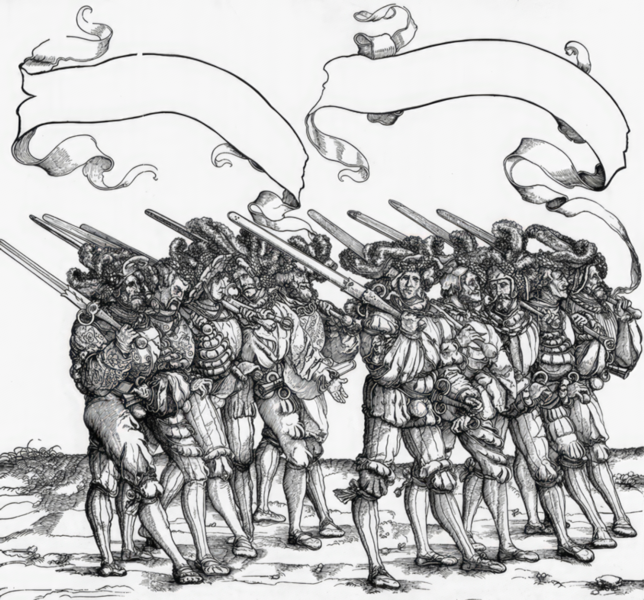
As mentioned, German two-handed blades were more accurately known as doppelhander or bidenhander. Although the following features are not necessarily found in all German two-handed swords, some common features seen on the Zweihander include:
Flamberg / Flambard
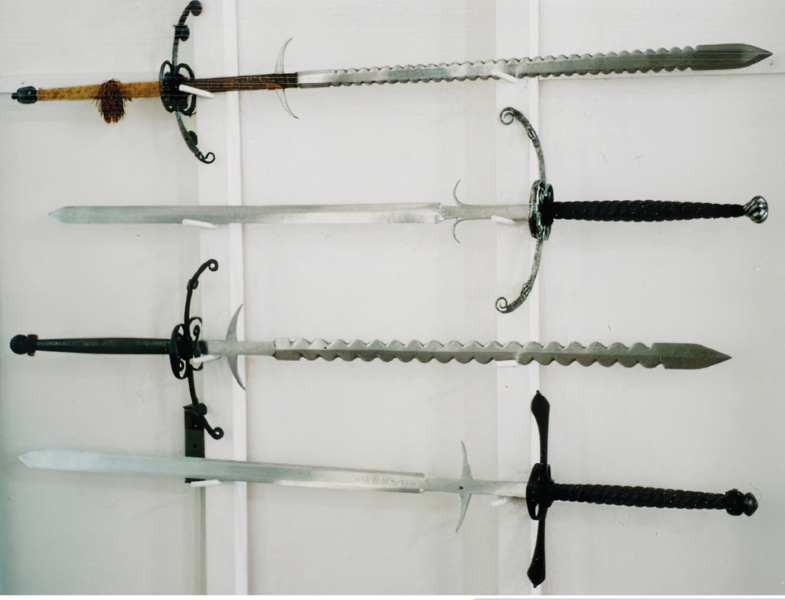
After the mid 16th century, German Zweihander swords tended to feature wavy or scalloping edges on their blades, believed to improve the sword’s efficiency by extending the cutting edge. While it may appear frightening, Zweihanders with these blades are more likely to be used for ceremonial purposes.
Parierhaken
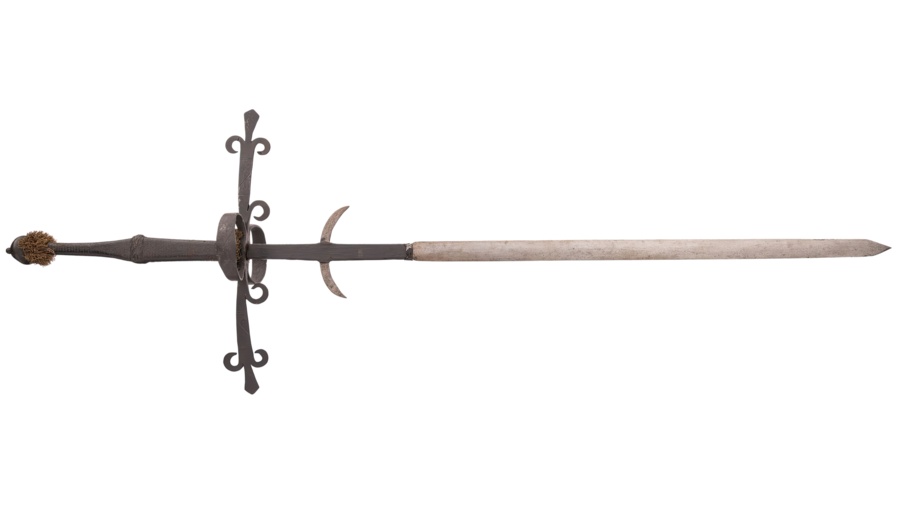
Also known as parrying hooks, these features became common in the early 16th century and are believed to have appeared in the mid-15th century. An example of a Zweihander with this feature is the papal gift from Calixtus III to King Henry IV of Spain, circa 1455 to 1458
The most effective form of the parrying hooks appeared in the mid-16th century. Similar to a crescent moon, the wide, forward pointing, curved design acts as a second guard and protects its wielder’s hands from a sliding blade when using half-sword techniques.
Crossguards
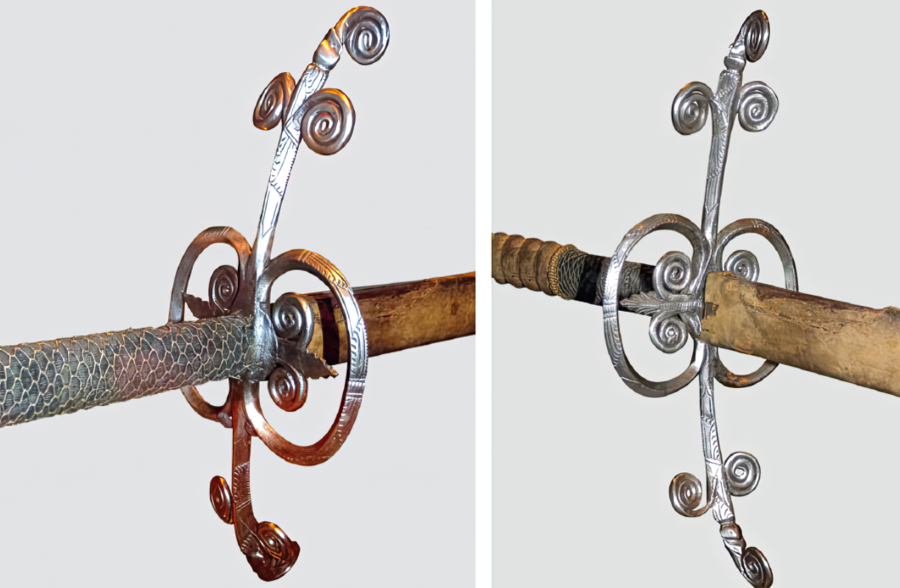
In the 14th and 15th centuries, Zweihander crossguards were generally straight, with more styles appearing in the late 16th century. From elegant whorls to silver inlays, this continued into the 17th century with increasingly intricate patterns chiseled on it.




Claymore
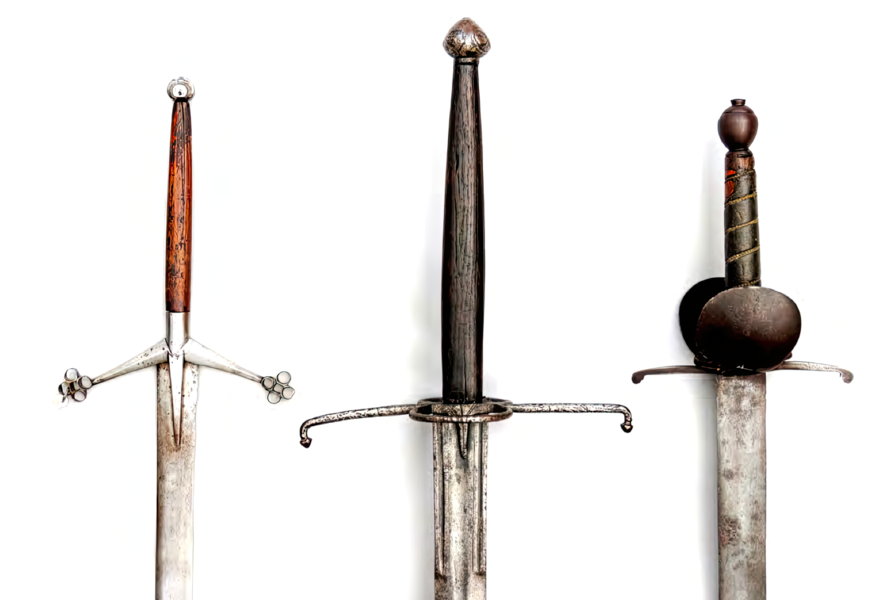
Scottish two-handed swords generally have broad double edged blades for cutting and thrusting, imported mostly from European blade-making centers of Passau and Solingen.
Although Scottish smiths were not able to produce these blades, they designed their own hilts. At the fully developed form, there are three sub variants available:
Scottish “Highland” Two-Handed Sword
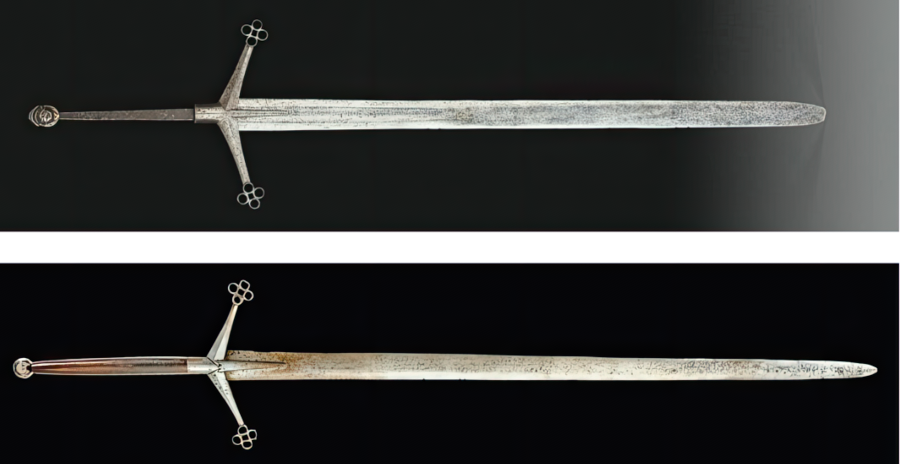
The Highland “Claymore” is known for the following features:
- Hilt
- Downward sloping, diamond cross-sectioned quillons that taper into circle quatrefoils as terminals
- High collar that extends upwards along the tang
- Long langets that extend down both sides of the blade
- Pommel
- Generally small and wheel-shaped
- Deeper than it is wider
- Almost appears too slight to balance the sword
Scottish “Lowland” Two-Handed Sword

As can be seen from the image above, the Lowland claymore has a:
- Hilt with:
- Long grip
- Broad, flat, slender quillons with a rounded cross section that terminate abruptly with downward facing knops
- Pointed langets extend down the middle of the blade
- Robust ring guards on both sides
- Pommel
- Usual doorknob shape
- Neck present beneath pommel
Scottish “Clamshell” Two-Handed Sword

The Clamshell “Claymore” is the most distinct of three sub variants with the following characteristics:
- Guard
Appears like two convex clam-shells that rise from the quillon, protecting its wielder’s hand.
- Crossguard
Two gently sloping quillons extending between shells, widening into flattened downward facing molded terminals
- Pommel
Doorknob shape with integral button on top and a flared neck beneath.
Historical Uses
In general, two-handed swords were used by warriors in duels, battles, and tournaments. However, each variant has different historical associations. For example:
Zweihander
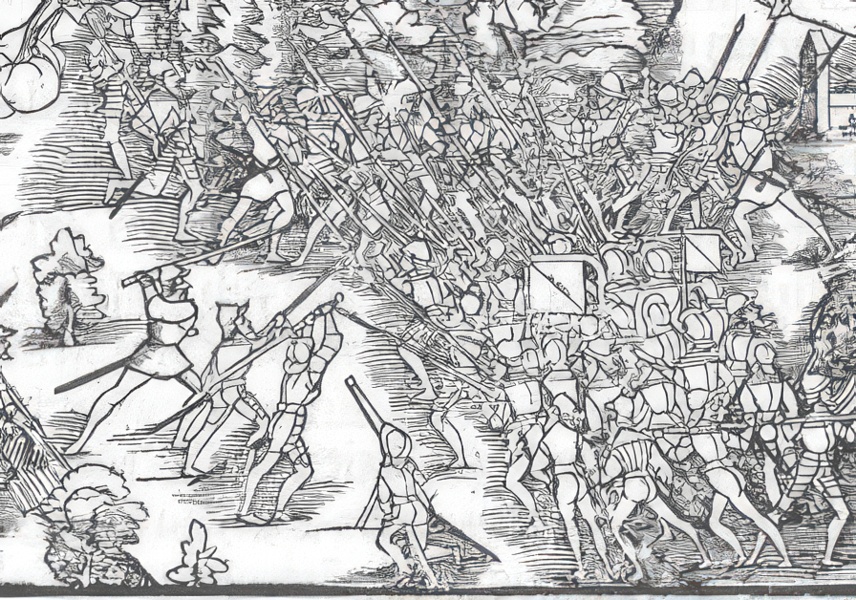
The Zweihander is most known for its association to the German Landsknechts, hired by Emperor Maximilian I. While most of the Landsknechts were pikemen, some were specially trained doppelsoldners, a term meaning “double pay men”, as they fought at the front lines and wielded the Zweihander to break through enemy pike formations.
Some of the most significant events that involved the Zweihander are:
In this battle, the German Landsknechts were victorious against Swiss pikemen who were regarded as military elites of European battlefields.
Hostilities between the Protestants and Catholics erupted due to irreconcilable differences whereupon some Zweihanders were used.
Additionally, one of the most renowned warriors to have wielded the Zweihander was Piers Gerlofs Donia or Grutte Pier, who sought revenge against the Black Band, a Landsknecht regiment who killed his wife, burnt his estate, and plundered his village.
Scottish Two-Handed Swords
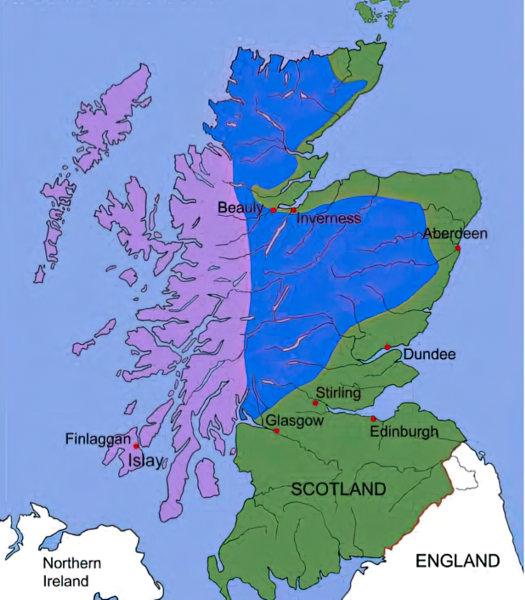
In Scotland, besides battles, tournaments, and duels, swords were often used for beheadings in the 6th century. As previously mentioned, there are three sub variants of the Scottish two-handed sword. This is due to the different geographic regions the locals settled into.
Scottish Highland “Claymore”
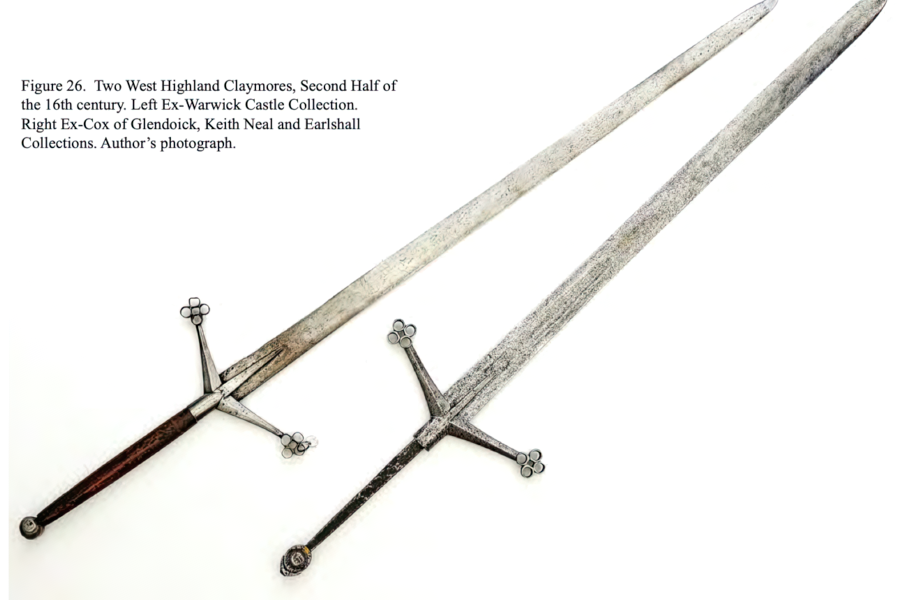
The people in the West Highlands lived facing the Irish Sea and Gaelic Ireland. With most having Norse and Gaelic origins, the people practiced a more post-Viking sea-based culture. A Gaelic representation, the West Highland Claymore is designed to be:
- Suitable for various circumstances and terrains, especially skirmishing, ambushing, and raiding
- Adaptable, agile, portable, high-impact
- Used often by West Highland mercenaries fighting in Ireland
A West Highland “Claymore” at Blair is traditionally known as the Executioner’s Sword.
Scottish Lowland “Claymore”
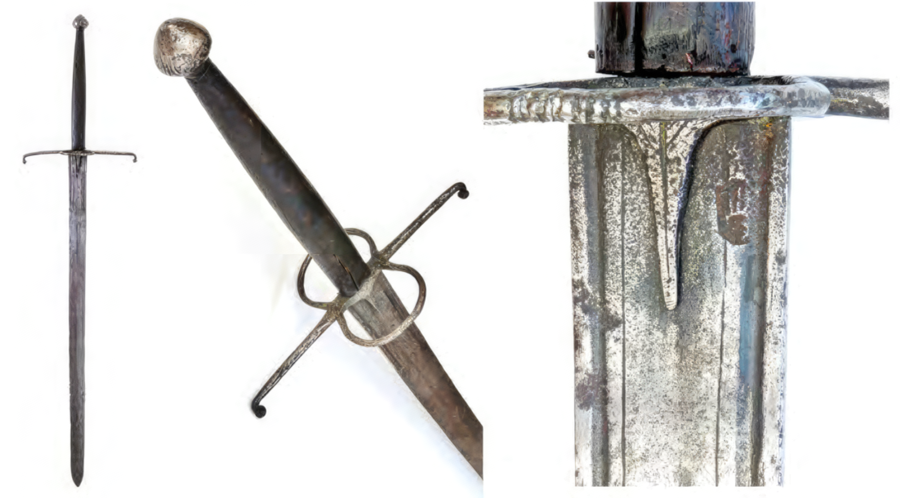
The Lowlands is where Scotland’s military organization is seen, as seen in the capital cities of Stirling (first part of 16th century) and Edinburgh (second part of 16th century). During this time, some of the armed forces wielded the Lowland Claymore known for its:
- Massive size, matching those illustrated in manuscripts during battle
- Used on foot by high status individuals
- Used in ritualistic peacetime processions
Due to its size, it is not wielded by just any soldier as much training is required to wield it effectively. Instead, it is wielded by a specialist part of the Lowland armory, carried by those who represented royal authority as a weapon and stately symbol.
Scottish Clamshell “Claymore”
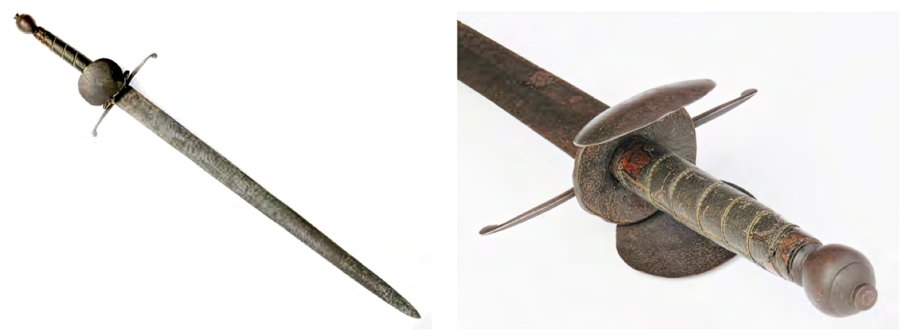
Smaller and more adaptable as a skirmishing weapon than the Lowland variant, the clamshell “claymore” was used throughout the Lowlands, especially in areas further from the seats of authority. This sword is believed to have been used by:
- Riding clans around the south, near England’s borders (Border Reivers) where there is a strong horse-based culture with regular feuds and raids into England.
- East Highlanders who often interact with Lowlanders, fighting together as mercenaries in the armies of Sweden.
Like the Highland variant, the Clamshell “Claymore” was adaptable and agile, more suitable for skirmishing compared to the Lowland type.
